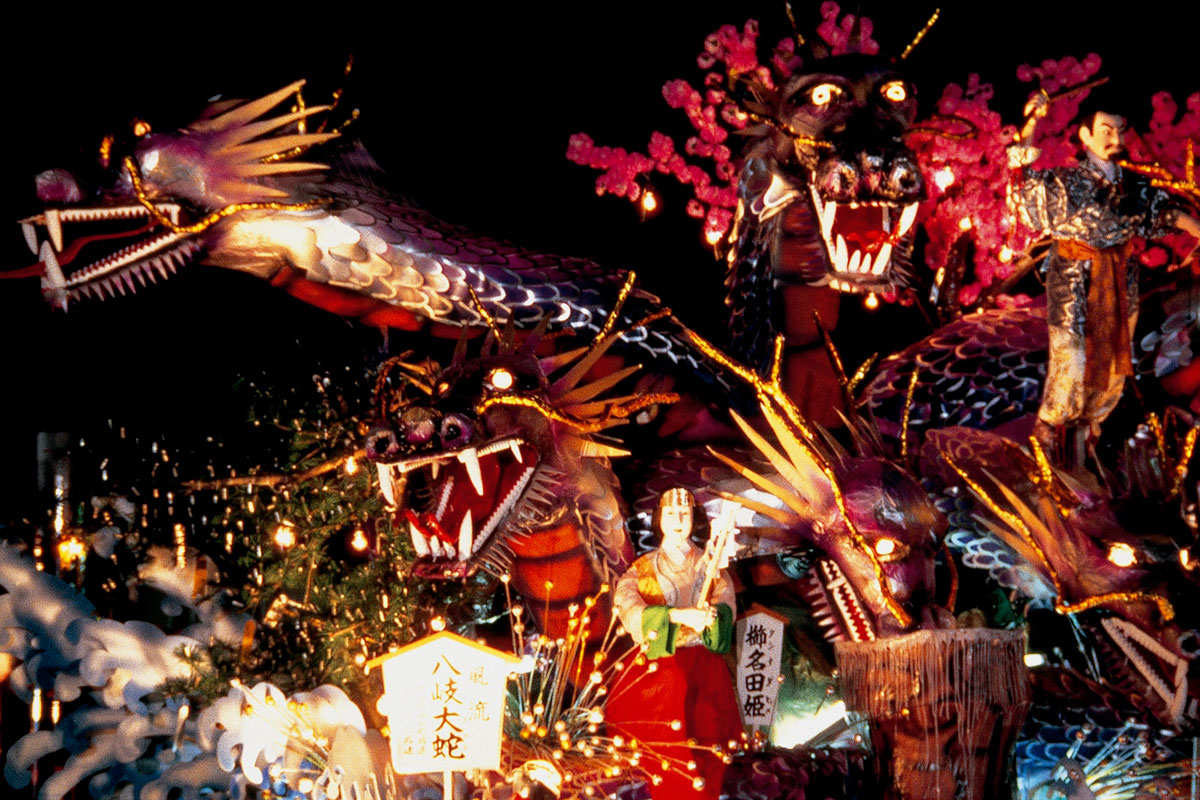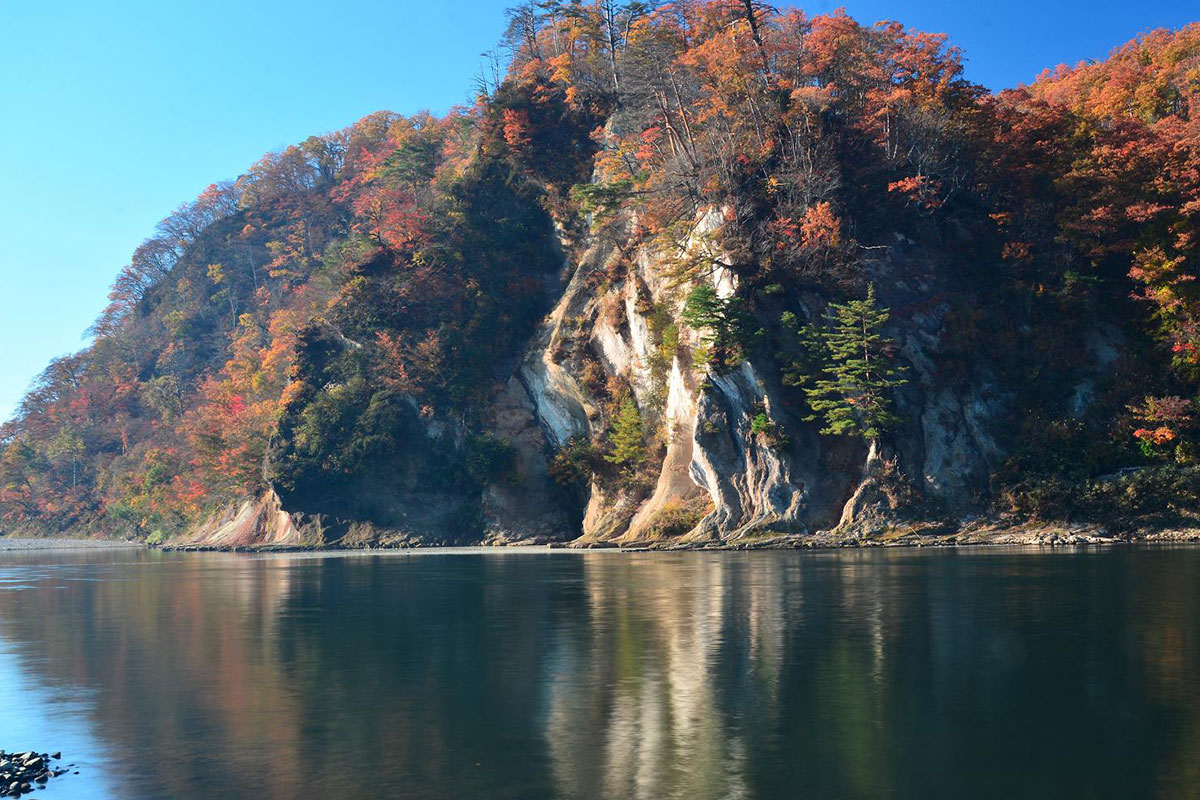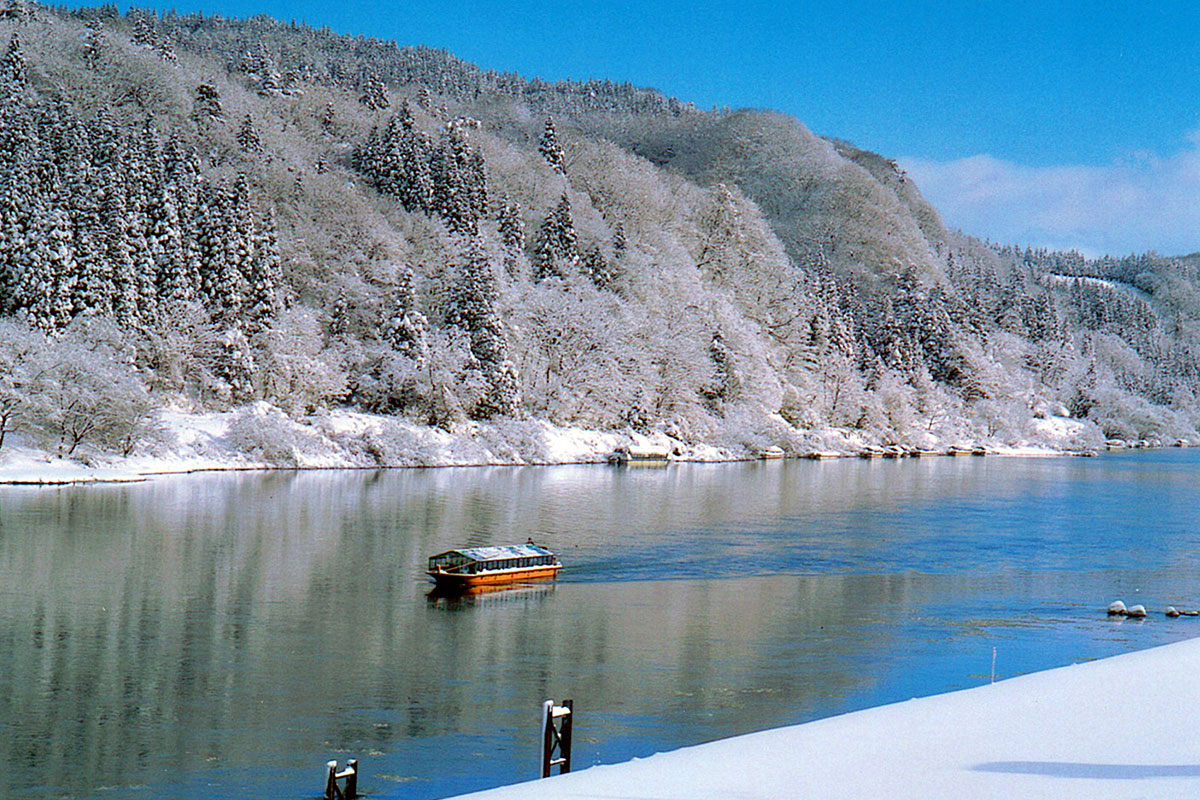Summer
- Festival Experience · Nature · Traditional Culture -
The Mogami area lies in naturally rich countryside surrounded by mountains. The green of the trees is vivid, the wind blowing through rice paddy fields is lively and the summers are hot and short. Let's take a trip to experience the abundant nature, vibrant festivals and traditional culture.
DAY1
◆ Arriving at Shinjo station, you will stop by the Mogami Manga Museum located in Yumeria, Shinjo station.
Well-known manga artists such as Yoshihiro Togashi, the author of Hunter×Hunter, and Yutaka Abe, the author of Detective Conan, etc. are associated with the Shinjo / Mogami area. There are rough drafts, special original illustrations, replica figures of characters from each of the illustrators’ manga, as well as personal items on display. For enthusiastic fans, these are a must-see.
There is a shrine to Kamuten, the Shinjo city mascot character, at the entrance to this museum.
Let's wish for a fulfilling journey here.
◆Next, we head to the history center.
Two of the prize-winning festival floats from the shinjo festival of Floats are displayed here, following annual selection by a committee that decides on the best designed floats.
Other exhibition spaces display traditional goods and folk art that tell of the history and culture of Shinjo.
Please savor the atmosphere of our snow country.
◆Shinjo Kame textile known as“Maboroshi no Orimono” (illusory twill)
You can see Beautiful hand-woven fabrics here.
Here, under guidance, you can experience weaving coasters and small mats on a traditional loom with colorful wool and cotton yarns.
◆The main event in Summer !! Let’s experience the Shinjo Festival of floats!!
The Shinjo Festival of floats is held for three days, from August 24 to August 26, every year.
It was designated a UNESCO Intangible Cultural Heritage in December 2016.
The festival is famous for its unique and gorgeous floats that wind through the city to the accompaniment of flute, drum and cymbal melodies echoing in the night sky.
You can enjoy the unusual hands-on experience of joining in the parade and walking through the city pulling floats!
It is a spectacular festival.
◆To complete the day we recommend a visit to Hijiori hot springs.
Let's recuperate in a secluded river valley boasting a 1,200-year history as a hot spring onsen.
Hijiori hot springs is known locally as the site of hidden water sources.
DAY2
Hijiori village has been popular for centuries as a hot spring resort for healing tiredness and wounds.
The Hijiori morning market starts from 5:30 in the morning. The local shopping street is crowded with stands selling the best wild vegetables, local pickles and delicious products.
We’ll leave for the second day of our trip after having chatted with local people at the morning market and rejuvenating.
◆ The Shikamura Terraced Rice Fields are one of 100 selected rice paddy landscapes in Japan.
Surrounded by the refreshing green of rice fields and inspiring views of Mt. Chokai and Mt. Gassan, this is an original Japanese landscape.
◆ The Shinjo Festival of floats goes for three days.
On August 25th, you can see the traditional Mikoshi of portable shrine procession accompanied by about 200 members dressed in costumes from the Edo-period(17-19C).
You can also help pull one of the twenty festival floats while getting to know Shinjo!
◆ The Mogami River cruise boat winds along the majestic Mogami River Gorge through the Dewa mountains that stretch out towards the east and west.
Charms of the boat ride include the spectacular Mogami Gorge sunset, and following the trails of the legendary 12C Military commander Yoshitsune, as well as a part of Matsuo Basho’s Journey to the Deep North.
◆ "Genso no Mori” (Phantom Forest) is located deep in the Mogami River Gorge. There are 1,000 year-old cedar trees here offering the mystical sight of huge branches splitting into several directions from the natural base and stretching toward the sky as the tree continually rejuvenates. A truly spiritual power spot! It has also been used as a wonderful location for shooting movies and commercials.
◆Let's slowly relax in the hot springs and heal from the tiredness of our journey after sweating under the summer sun.
Akakura Onsen is said to have been discovered by Jikaku Daishi (a Buddhist monk) in the early Heian period.
Known as a health spa resort, the poet, Matsuo Basho, rested here on his journey to the Deep North.
DAY3
◆Maemori Kogen. Surrounded by nature in every direction, you can spend a time with animals. There are pony rides, plus deer and goats. There is also a go cart course. Let’drive!!
◆At the local restaurant ,“Yanachaya Mogami” you can enjoy whole sweetfish, skewered and grilled over charcoal, as well as soba (noodles. The shop, “ Shiki no Ka,” sells fresh local vegetables and foods.
◆The “Sakegawa Kabuki” is a Yamagata Prefecture-designated intangible cultural property.
This traditional kabuki play has a long history and the performance has been handed down from generation to generation. How would you like to see yourself in traditional kabuki kumadori makeup? You will have a great experience and feel like a kabuki actor.
◆“Kosugi no Oosugi,” the shape of the imposing ancient tree, also known as “Totoro no ki,” looks like Totoro in the Ghibli movie “My Neighbor Totoro.” This venerable tree is over 1,000 years old and people believe that the giant tree has spiritual power for romance, a harmonious marriage, and having a healthy baby.
A summer journey to Mogami gives you a wonderful opportunity to recharge your energy with the Shinjo Festival of floats, hot springs, traditional culture and sacred nature.
Recommended of Mogami Tour
Amazing Mogami







